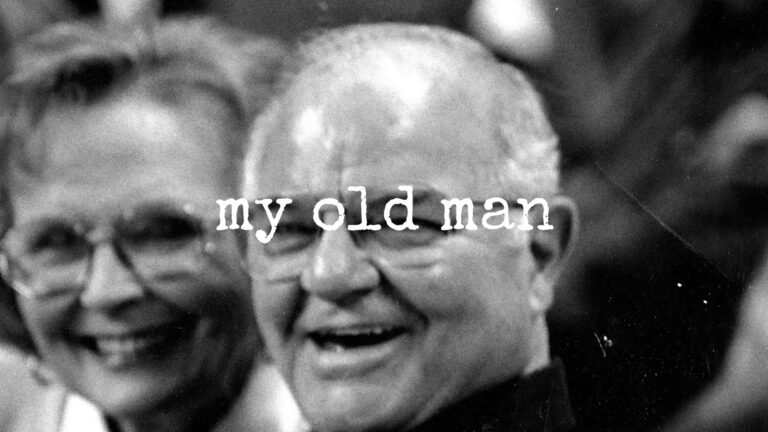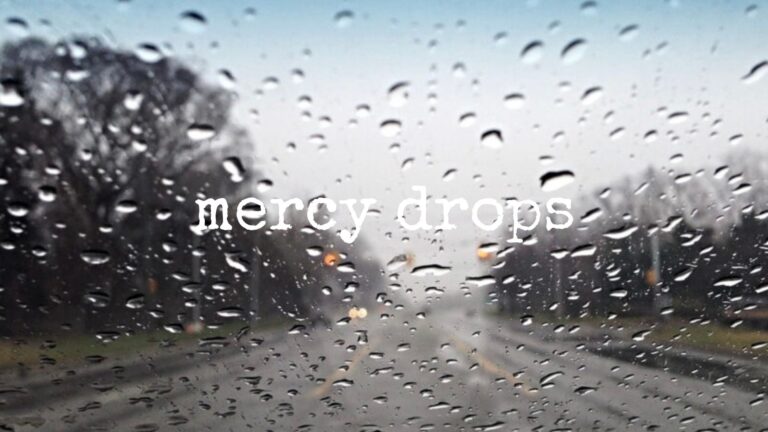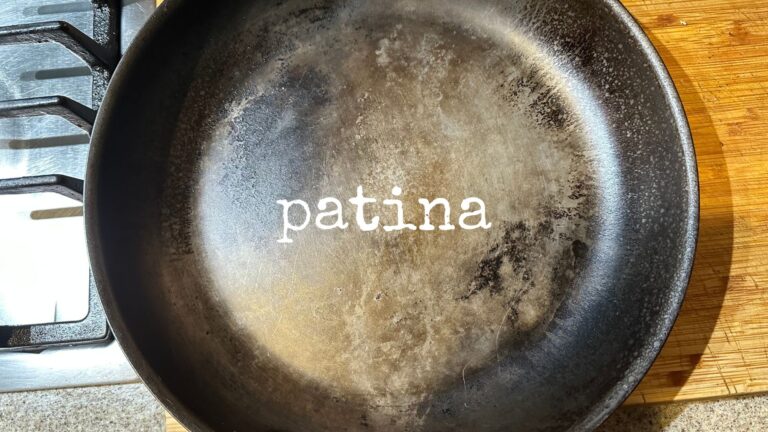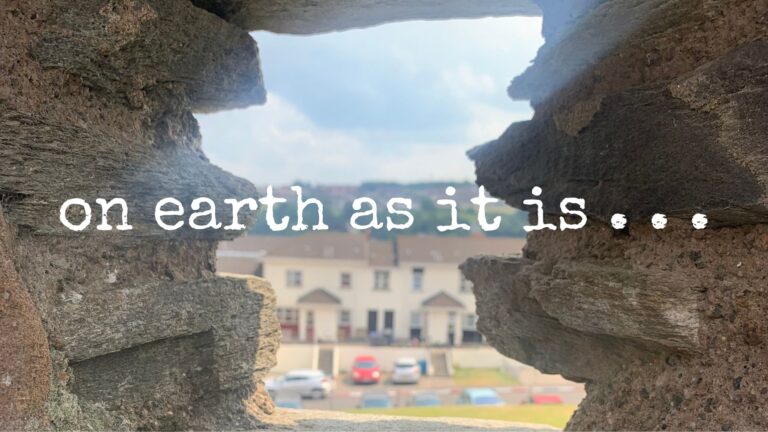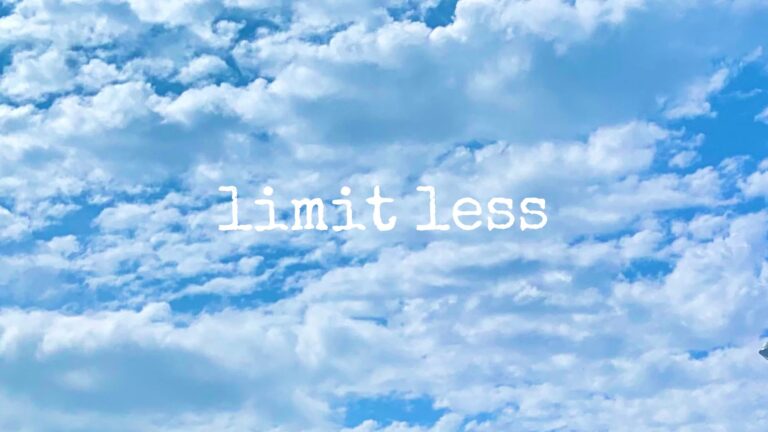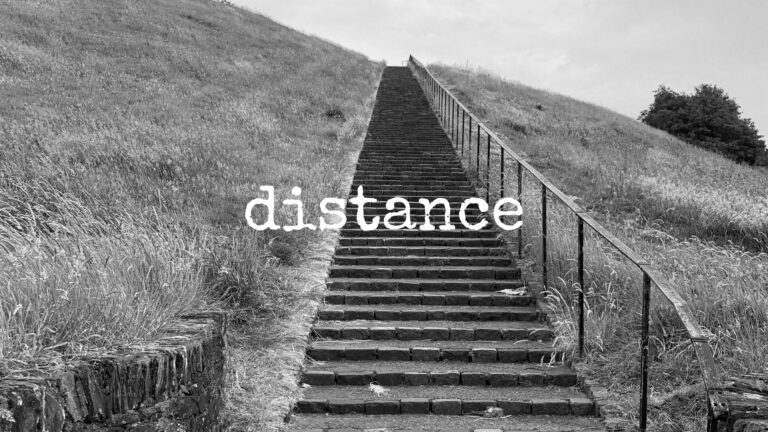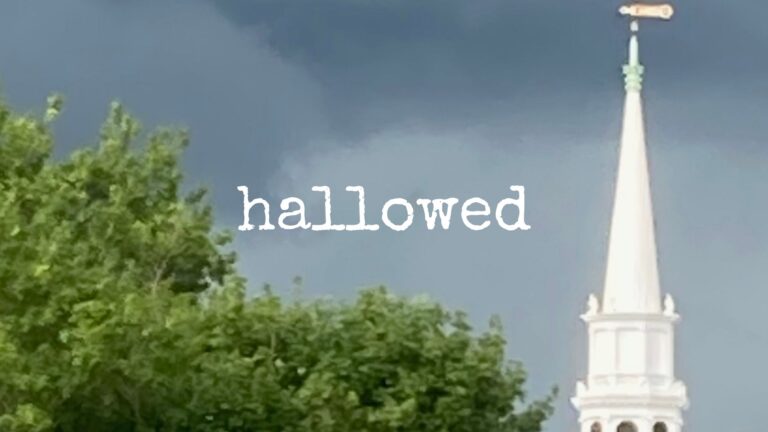Today was the second Sunday in my sermon series on the Lord’s Prayer and we talked about the opening sentence: “Our Father who is in heaven, hallowed by your name.” As I say in my opening, it was harder to prepare the sermon than I had anticipated. I was a bit surprised where the sermon took me and I was grateful for the way the sermon was received. I hope you find something that speaks to you.
______________________
Back in May, when I was thinking about our services for the summer, preaching a series on the Lord’s Prayer seemed like a good idea: to take it phrase by phrase and look at the things we pass by when we recite it together each week. Sounds simple enough, right? Yeah–not so much.
As I turned the opening phrase over and over in my head, I thought about a standup routine where comedian Gary Gulman described a (fictitious) documentary about how we got the mailing abbreviations for states. He told as though people thought it would go quickly:
What’s first?
Alabama.
AL. That was easy. We’ll have this done before they stop serving breakfast in the hotel lobby. What’s next?
Alaska.
Okay, set that aside and we’ll come back to it. What’s next?
Arizona.
AR. Now we’re rolling. What’s next?
Arkansas.
It wasn’t as easy as it seemed. As you can tell by the hymns we have sung and the title printed in the order of service, “Hallowed Be Thy Name,” I thought it was going to be about the names we use for God–and it is, in part–but what has challenged me most this week is the word we use almost exclusively in this prayer, other than on October 31: hallowed.
Hallowed be thy name.
I can’t hear that phrase without thinking about the little boy who responded to his Sunday School teacher who said that no one knew God’s name. He raised his hand high and said, “I do. It’s Harold.”
The teacher was puzzled and said, “I don’t think that’s right,” and the kid said, “Sure it is. It’s in the prayer–Harold be thy name.”
Harold is easier to understand than hallowed, which is an old word that saw its best days in the mid-1800s and has been on the decline ever since, unless you go to a church where we recite it every week. My guess is none of us uses the word hallow in conversation with any regularity. King James used it as the English translation for a Greek word that connotes sanctification and reverence. Once the prayer became standardized, we’ve had trouble letting ourselves use a different word.
What do we mean when we pray “hallowed be thy name” or “your name be hallowed?”
The words holy and health (as in wholeness) come from the same root as hallow, which leads to other helpful words–sacred, unique, primary–that can give us some handles. And saying God’s name should be revered is another way of saying God is the sacred, unique, and primary one. A name represents the being, as it does with the names we call each other. To pray “your name is hallowed” is saying “you are The One above all.”
My friend Taylor shared something he had learned from someone else that has stuck with me. He said the word priority should never be plural because it means the first thing or the most important thing. Since we can’t have multiple first things, we can’t have priorities. Something–or someone–matters most. Philosopher Søren Kierkegaard said, “Purity in heart is to will and to do one thing,” which is the philosophical version of ther same idea.
When I think of my priority, I think of Ginger. My marriage is the most important relationship in my life. I have others that matter but none as much as my marriage. Another way to think about it is perhaps you have been in work situations where you were given multiple responsibilities. Often part of the task was to figure out which one mattered most. Something almost always does.
To say God’s name is hallowed is to say God is our priority and, more than that, God is the world’s priority. The universe’s priority. That’s cosmic stuff, yet it comes at the end of a sentence that begins by calling God a parent, a father, which is an intimate and personal name. In one statement, God is as close as family and as cosmic as the Universal Priority.
And that brings us to the names we use for God. The Sunday School teacher was right: no one knows God’s name. Hebrew tradition and theology say that no one should speak God’s name aloud. Our English word lord, which we often use for God, comes from a Hebrew work around, if you will–adonai–that was used as a replacement name. Though we as Christians do not keep that same tradition, we have many names for God. Father–the one used in this prayer is one of God’s names; but it is not God’s name.
That’s a subtle but crucial distinction.
Historically, it is a name that has been overused in most Christian circles. It can be a rich metaphor of caring and compassion. But if you grew up with a father who was unavailable or absent or abusive and the only name you hear for God is father, you may have a hard time hallowing that name. My father was a good man, and he had a hard time showing his affection because of how his father raised him. My father was also a pastor—since I went to his church throughout my childhood and teenage years, he held the role of my pastor. I had a hard time separating God and my father, so that metaphor is not always meaningful to me.
My mother is the one who taught me how to be hospitable, how to cook, how to help those around you feel welcome. She was also a tenacious and determined person. For me, mother is often a helpful name for God. But our names for God are not limited to parental metaphors. At different times in Christian history different metaphors have come to the forefront. The Hebrews often thought of God as a king, a royal ruler, in part because they saw themselves as God’s subjects and they were subjects to kings and queens themselves. Jesus talked about God in many different metaphors that went beyond both parenting and gender, all of them pointing to a God who regards us–at all of creation–as worthy of love and care.
I was thinking about this sermon while I was in Ireland and talked to a friend about the words that we have considered this morning. They have struggled with father as a primary metaphor for God, so the prayer is often hard for them, but they said they were talking with someone they trusted and that person said, “I just pray, ‘Hallowed be thy names,’ and that leaves a way for me to bring my names too.”
Mother. Creator. Compassionate Life-giver. Father. Holy One. Great Spirit. All these names people have used in other versions of this prayer in hopes of expanding who can feel connected to our loving God who is the Universal Priority—our God who is Love. That’s as close to God’s name as I think we can get. God is Love.
When we talk about how to make our language more inclusive, or we change words to hymns and prayers we have known forever, we do so to widen the circle of belonging in the name of our God, who is Love.
Every week Ginger reads the draft of my sermon. You should be grateful; she is a good editor. Her critiques usually have to do with making things clearer: I need more examples, I need to rephrase something, I need to explain how I got from A to B. I take her advice because I want to get my ideas across to you as clearly as possible.
The words we say and sing in worship should have the same kind of clarity and intent. We want whoever walks in here to feel welcomed, to feel like they belong, like we are speaking to them in a language of love, whether they are new or they have been coming here their whole lives. Saying familiar things is one of the ways we feel at home, so sometimes changes are unsettling. That is when we need to talk to one another to make clear our intentions and to take stock of our impact to make sure we are prioritizing our relationships.
Some are skeptical of churches because over the history of the church, even down to these days we are living, the priority of God’s love has far too often been buried by those who say they are acting in God’s name, but their words and deeds show their true priority as power or judgment or conquest. Let me be clear: God is never the priority when the words spoken and the actions taken destroy or diminish or dehumanize others.
God is Love.
God is Love, and when we pray “hallowed be thy name” we are saying love will be our priority over tradition, over theology, over politics, over prejudice, over all that would keep us from loving one another in God’s name. That’s what we pray every week. May we be people who live into that prayer. Amen.
Peace,
Milton
My weekly newsletter, mixing metaphors is free and comes out every Tuesday, which means if you click the link and subscribe you will get it this week. I would love that. If you would like to support my writing, you can become a sustaining member or buy me a cup of coffee.
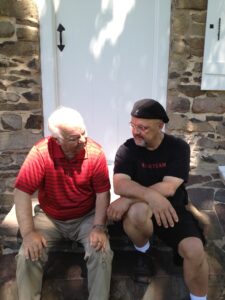 singing.
singing.